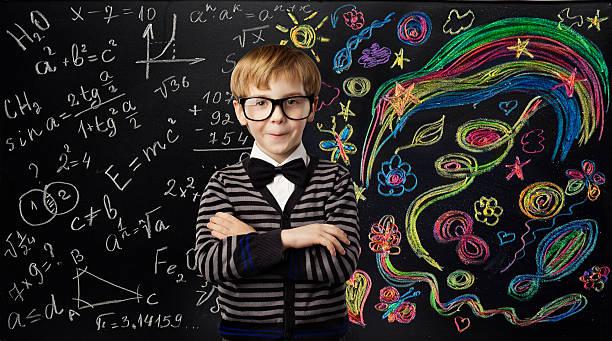
Math & Art
Do we need math in real life? Are these concepts necessary outside this classroom?
Teachers hear these questions from their students quite frequently. Regrettably, math is misunderstood as a strict discipline requiring rote memorization of principles and formulas. Math, in a way, is similar to art in that it calls for a good amount of creativity, imagination, and logic in its expressions.
Einstein, a well-known German physicist, regarded math as a poetry of logical concepts; a representation of logic that uses numbers rather than words to make sense of the universe in an orderly way. There are connections between math and art. Artists use mathematical concepts like geometry and symmetry to express ideas and emotions. But how can you link these two fields when it comes to math training for kids?
Creative ways to teach math through art
In terms of math training for kids, math and art can work hand in glove to build a strong arithmetic foundation in kids. By nature, children can be quite creative with their imagination and so it might be safe to call them budding artists. This imaginative skill can be leveraged to creatively teach mathematical concepts to children and promote math learning through art.
Speaking of teaching, there are hundreds of teaching assistant jobs available that focus on this very concept. These professionals are skilled at integrating art into math lessons, making learning an enjoyable and engaging experience for children. They understand the importance of creativity in education and use it to help students grasp complex mathematical concepts.
Art has an arsenal of practical teaching resources for mathematics that exposes children to ways math can be digested engagingly. Here are a few:
- Put the ‘me’ in geometry
If not handled correctly, the sheer thought of geometry and its arithmetic workings could cause anxiety. Personalizing geometry helps to alleviate this phobia and teaches children that geometry exists all around us.
Offer imaginative geometry-based activities to help them become more spatially aware and able to visualize forms. Making a collage with different-sized versions of the same shape is a simple approach. In doing so, kids will learn that when items are dissected, harmless forms remain.
- Employ music
Music is a valuable tool in art math learning as it motivates children during lessons while ensuring they retain acquired knowledge. Singing and chanting are one of the few ways music can be utilized. Have the children replace the lyrics of a popular song they like with concepts of geometry or algebra.
- Math ‘n’ Groove
By integrating dance into math lessons, you can be sure no one would be nodding off in class. In addition, it reaps a lot of benefits such as flexibility in thinking, creativity, and motivation in math, all of which are necessary skills in learning math.
By dancing, children are expected to remain substantially apart from one another while maintaining excellent synchronization. This teaches them crucial concepts like distance, patterns, and symmetry.
- Use Stories
Children have creative minds. Therefore, they are drawn to lessons that make use of it. There are numerous methods to use stories to help children learn math and the fun of it is that you can make up a tale to suit whatever lesson you have planned.
Final Thoughts
By employing their natural creativity to reinforce arithmetic ideas, art helps youngsters realize their numerical potential. Also, it enhances critical numerical abilities as well as emotional development, memory, self-awareness, expression, and creativity.
We hope these tips help you make math more interesting for your kids. Good luck!
